2013-01-09 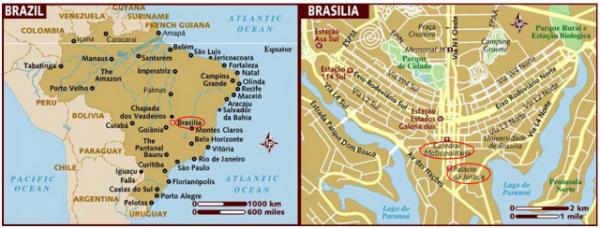
【Aiden in English】
We missed the tour bus in the morning, so Mom and I decided to set out on our own and explore the Brazilian capital, which was created ex nihilo in the country's center in 1960. The glaring sun burned my neck as my mom and I walked around the Monumental Axis of Brasilia. Like the newly built Anzac Parade in Canberra, Australia, which we visited three years ago, the Monumental Axis became the heart of Brazilian political power: the laza of the Three Powers (comprising the legislative, Executive, and Presidential offices as well as the judicial branch, the splanade of the Ministers, and the Ministry of External Relations. All landmarks lined up one after the other in a showcase. This was the largest city in the world, which did not exist at the beginning of the 20th century. The most famous Brazilian principal architect, Oscar Niemeyer (1907-2012), also designed it. Due to its innovative and imaginative elements, Brasilia was designated a UNESCO World Heritage site in 1987. It was a lovely sunny day, but we learned not to trust the weather in the past week. Brasilia, in particular, could rain on a sunny day, shining like water. We took an elevator to the top of the TV Tower across from our hotel, Melia Brasil 21, and looked out at a distance. The Cultural Complex of the Republic, including the National Library and National Museum, the Cathedral of Brasilia, the artificial Paranoa Lake, and the JK Bridge, was located on one side, toward the southeast. The Conference Center and the JK Memorial were a little further ahead on the other side, toward the west. By the way, JK, i.e., Juscelino Kubitschek de Oliveira, was the President who built the new capital city in Brasilia. It took a little time to identify what we saw. We could view the Monumental Axis from the intersection with the Highway Axis to the government buildings of the Ministries on each side of the Esplanade! Once we had memorized our destinations and historical places, we began with a challenging walk. Our first stop was at an enormous hyperboloid Indian crown. If that wasn't strange enough, right under the Cathedral of Brasilia was Dom Bosco Sanctuary with curved columns. Three angles hung from the rainbow ceiling. It looked gorgeous, but the temperature inside was just as hot as the outside. The humidity almost killed us with no hesitation. The National Theatre, in the shape of a truncated Aztec pyramid, became the biggest architectural center in Niemeyer's works. The Ministry of Foreign Affairs became one of Niemeyer's most radiant buildings. The marble walls, gardens, and sculpture glorified the success of the Itamarati Palace, which was contributed to by three other extraordinary creators, designers, and artists. Pigeon's House featured a 66-ft/20-m high concrete sculpture adjacent to the world's most significant flag, which was flown continuously at the Plaza of the Three Powers. Plateau Palace functioned as the working office of the President of the Republic, including the offices of the Vice President and the Chief of Staff. The Supreme Tribunal Federal was not only the highest court in Brazil but also the court that judged the constitutionality of laws passed by the National Congress. The facade of the Ministry of Justice had six balconies decorated with running water. The Office of the Attorney-General was one of the few buildings that was not white. The Congress consisted of the Senate House (81 members) on the small cupola below and the Chamber of Deputies (513 members) on the sizable, inverted cone above. I ran into a boy who was 9, the same age as I was. He collaborated with his mom, who held a jumping pole, to get mangoes and avocados down from the trees at the Esplanade of the Ministers. Due to the language barrier, we did not converse verbally with each other and communicated primarily through gestures and body language. Before we knew it, we were again under the searing hot sun. As the heat enveloped us, we entered the Nation's Pantheon of JK, surrounded by historical pictures in the dark. The pictures were worth a thousand words because all the descriptions in Portuguese appeared meaningless to us. In the form of a dove, this national monument was dedicated to honoring the memory of Brazilian national heroes who represented ideals of freedom and democracy. At noon, we started to focus on an eatery where we were supposed to dine out for lunch. There were no formal restaurants commercially available on the Monumental Axis. We were cautious about encountering street vendors. No doubt, the National Congress came at the top of our selections. Once we had briefly passed the security X-ray gate, we asked for directions to a restaurant. No one seemed to know how to tell us in English until a gentleman volunteered to take us there. After an enormous feast, we toured the Senate House with a tour guide who could only speak her mother tongue. We didn't understand anything until the color changed from Green to Black. Until now, we realized that the locals typically didn't speak English. Tourists would benefit if they knew Portuguese or even Spanish. Unfortunately, we understood very little in either language. Mom asked before we left the National Congress if she could cash US dollars from the Bank of Brazil. Sadly, our ATM card was outdated and could not be recognized in this country. Mom would like to find out where we could use our ATM card. A lady who worked in Congress with bilingual staff overheard the conversation between Mom and a banker and volunteered to approach us as our interpreter. We were redirected to the Central Bank of Brazil, the only place to cash out US dollars. She helped us hire a taxi and told the Portuguese-speaking driver to take us from the central bank to our hotel. Even at the Central Bank of Brazil, we couldn't exchange the US dollar, but the Brazilian currency was the Real. Disappointedly, we returned to the sunlight, except the sun was gone. It started to rain, and gallons of water came from the sky. By the time we ran into the hotel a short distance after getting out of the taxi, we were wetter than fish. I felt like a starving stray dog once again. 【红霞译】
早上我们错过旅游大巴,只好万里长征始于足下,徒步自游首都巴西利亚“红木炭火之地”,一座1956年才开始从荒芜人烟的巴西中部高原建立起来的现代化京城。 与两年前我们拜访过的澳大利亚新建首都堪培拉“聚会场所”阅兵广场相似,巴西纪念大道同样是全国政治心脏:三权广场(总统府、联邦最高法院、国会参众两院)、政府各部大厦和外交部,依次展示在我们面前,这是世界上自20世纪以来由巴西著名建筑师奥斯卡·尼迈尔“神矛·新管家”(1907—2012)主持设计的最大城市,其标新立异的创作手法结合超越时空的想象力,让巴西利亚于1987年跻身联合国教科文组织《世界遗产名录》。
今天天气不错万里晴空,但我们依然把持一颗红心两手准备,尤其在巴西首都老天翻脸不认人,倾盆大雨说下就下,不仅让盛夏火爆的骄阳挂不住脸面,更令我们这些远方来客措手不及。 下榻美利亚“梣树”巴西21商务中心酒店对面正是电视塔,我们登上至高点鸟瞰全城,国家图书馆和国家博物馆所在的文教区、巴西大教堂、疯狂人工湖和JK桥位居城东南;会议中心和JK总统纪念碑面朝西方。顺便提一下,JK是儒塞利诺·库比契克·奥利维拉的简称,1956年时任总统,并下令迁都建城。 我们没花多少时间就能辨认出所要参观的景点,几乎全部座落在纪念轴与交通要道垂直交叉线以南。
确定了旅行坐标之后,我们开始正式出征。第一站便是巨大无比呈双曲面形的印第安人“王冠”──巴西大教堂:论设计,构思自然,风格独特;论美观,波浪式斜柱烘托出圆拱形鲍思高圣殿,三位天使凌空悬挂彩虹屋顶之下,看上去非常优雅。一月初南半球酷暑天气,教堂内部温度跟外面没什么两样,但湿度却嚣张到足以叫我们死无藏身之地。 国家剧院据称为尼迈尔设计师作品中最大的建筑中心,其形状犹如削掉顶部的阿兹特克“白色之地”金字塔。 外交部大楼是尼迈尔设计师另一部不朽作品,大理石墙、花园、雕塑各由其他三位杰出的创造家、设计家和艺术家鼎力合作,使这个国务院宫殿建筑大放异彩。
鸽舍是一个66英尺/20米高的钢筋水泥雕塑,座落于三权广场中央,旁边矗立着世界上最大的连日飘扬的国旗。
高原宫不仅用作巴西总统官邸,同时还是副总统和总统府发言人办公所在地。
最高联邦法院是巴西独立于国会的最高审级和审判机关;斜对面司法部大楼带有六个流水平台,旁边检察院长办公楼则是少数几个非白色建筑之一。
联邦议会大厦集合了参议院(81席)和众议院(513席),前者小圆拱朝下,后者大圆拱朝上,各有不同寓意。
眼前这位老弟与我同为九岁,在政府部委大厦前我俩不期而遇,当时他正和妈妈分工合作,妈妈手握长杆,试图将楼道两旁高树上结满的芒果和鳄梨打下来;而他则负责把掉落在地的芒果和鳄梨一个个地收集到桶里,准备带回家去。因为彼此语言交流不畅,我们不好意思地只能靠手势互致问候。
继续走着,不觉我们一次又一次赤裸裸地暴露在烈日骄阳之中任其生吞活剥,好在这个接骨眼上JK国家纪念馆闪现眼前,我们头也不回地钻了进去。国家纪念馆里面黑乎乎的,仅能看清墙上历史图画,而这些图画绝对胜过千言万语,因为我们如同文盲,对葡萄牙文大字不识;国家纪念馆外形像和平鸽,用以纪念为争取自由和民主而捐躯的爱国志士。 中午时分我们需要就地解决吃饭问题,纪念大道未设正式餐馆,而我和妈妈又不情愿随便把自己交待给小商小贩,无疑眼前国会大厦成为我们最佳选择,简单地通过X光安检扫描之后,我们随即询问餐馆去向,可现场大部分人不会说英语,幸好一位工作人员见义勇为,主动送我们去职工食堂,水足饭饱后我们游览参议院,因为当时会说英语的人手有限,我们大胆报名参加了葡语小组,导游声情并茂的解说其实都是对牛弹琴,从绿色大厅到黑色大厅兜兜转转,我们如听天书雾里看花,说句实话若到巴西旅游,最好知会葡萄牙语,哪怕连蒙带猜懂点邻家通用的西班牙语也方便应酬,信不信由你,在巴西英语几乎没有用武之地!如今事到临头,我们只能大眼瞪小眼小眼乱转悠。 离开国会大厦之前,妈妈想起取点美元零花,可是随身携带的美国银行卡非常落伍,当地取款机根本无法确认识别,于是妈妈便去地下室巴西银行分所碰碰运气,且不说能否办理,没有一位工作人员能用英语告诉妈妈“行”或者“不行”,就在我们迷惘之际,一位就职于国会众议院的女顾客挺身而出,主动给我们担当翻译,并建议我们去巴西中央银行碰碰运气,我们坐上由她安排的出租,遵照指定路线飞离而去,等赶到巴西中央银行才明白外汇规定,在巴西任何外国游客都不允许直接提取美元,倒是我们可以随意换用巴西货币雷亚尔“皇家”。嗨!几经折腾,我们终于走出室内重见天日,不过此时天气转阴,瓢泼大雨即刻倾注而灌,等下车跑回几步之遥的酒店,我们不光浑身上下被淋得精透,连肚子也开始咕噜咕噜发起内讧。
Today in History(历史上的今天): 2011:情感投资(Emotional Investment) 2010:澳洲艾尔斯财富继承人巨石(Ayers Rock, Australia) 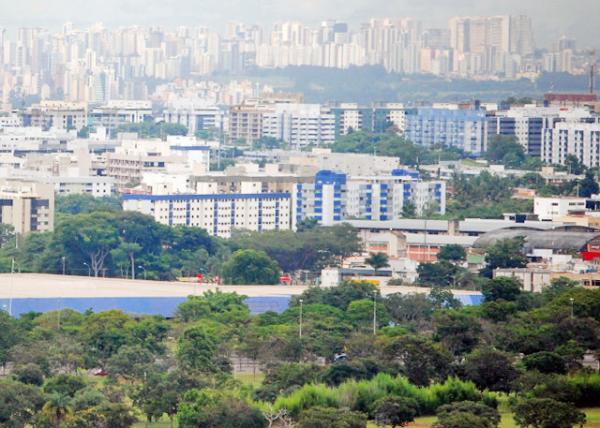 Cityscape of Brasilia (巴西首都景观) Cityscape of Brasilia (巴西首都景观)
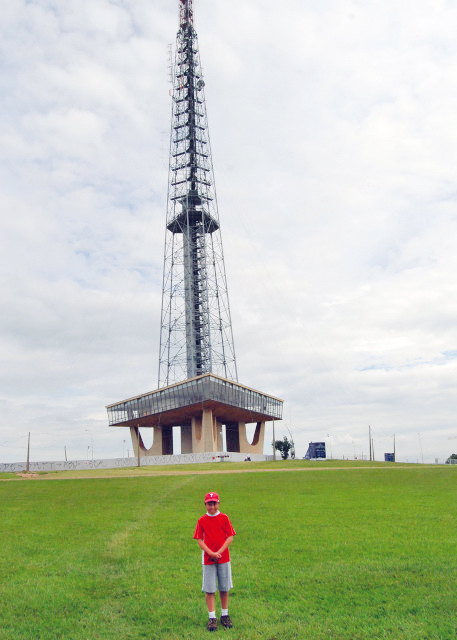
Television Tower Based in a Triangular-Shaped Exposed Concrete Volume (电视塔·基座为三角形裸露混凝土结构 01-09-2013) 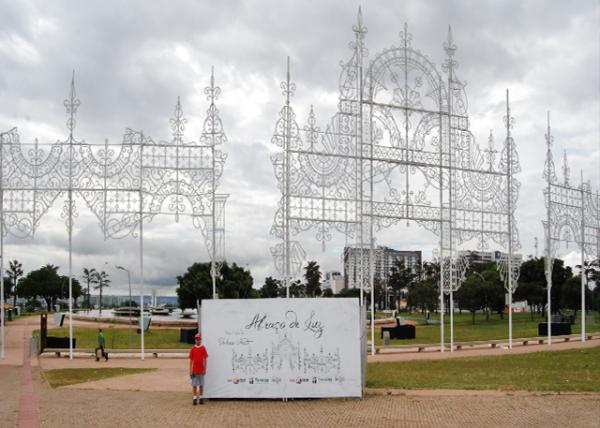 Abraço da Luz or Embrace of Light in Mourning for Niemeyer's Death Abraço da Luz or Embrace of Light in Mourning for Niemeyer's Death
(拥抱光明·悼念打造巴西利亚的建筑师奥斯卡·尼迈尔“神矛·新管家”逝世 01-09-2013) 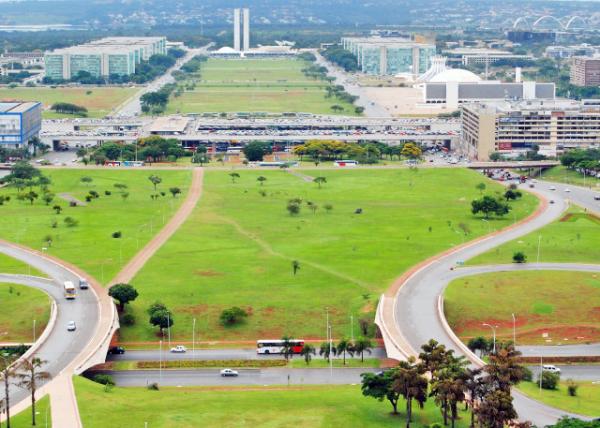 Panorama of Monumental Axis, the Widest Median Strip of a Highway in the World Panorama of Monumental Axis, the Widest Median Strip of a Highway in the World
(纪念轴全景·世上最宽的交通要道中央分隔带) 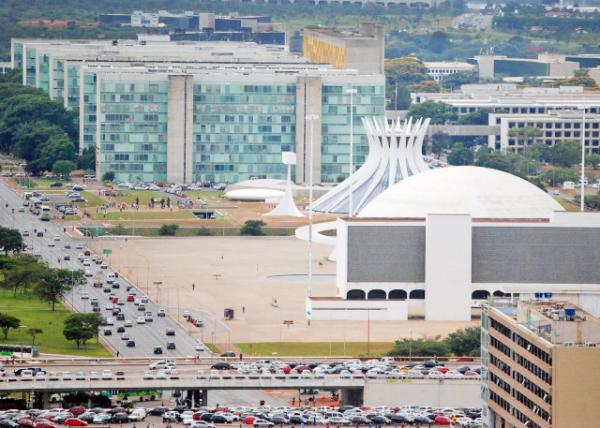 Cathedral of Brasilia & Museu Nacional da República Cathedral of Brasilia & Museu Nacional da República
(巴西大教堂与国立博物馆) 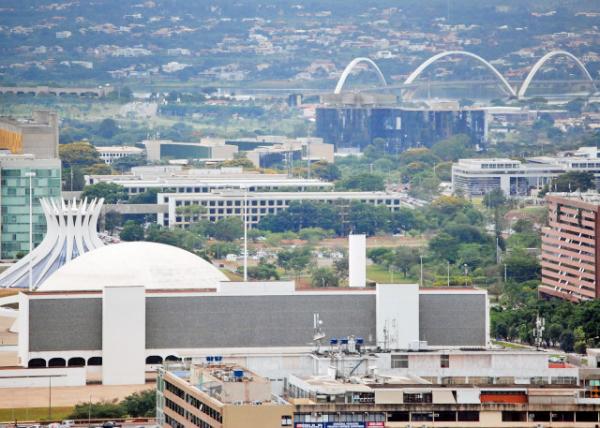 Cathedral of Brasilia, Museu Nacional da República, & National Library w/ JK Bridge Cathedral of Brasilia, Museu Nacional da República, & National Library w/ JK Bridge
(巴西大教堂、国立博物馆和国家图书馆及其背后的儒塞利诺·库比契克大桥) 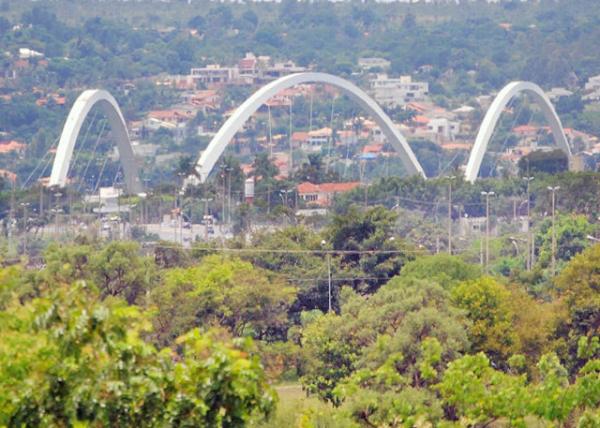 Juscelino Kubitschek Bridge w/ 3 Asymmetrical Steel Arches Juscelino Kubitschek Bridge w/ 3 Asymmetrical Steel Arches
(儒塞利诺·库比契克大桥——拥有三个不对称的钢拱)  Juscelino Kubitschek Bridge, a Steel & Concrete Arch Bridge across Lake Paranoá Juscelino Kubitschek Bridge, a Steel & Concrete Arch Bridge across Lake Paranoá
(儒塞利诺·库比契克桥——横跨帕拉诺阿“海湾”湖的钢筋混凝土拱桥) 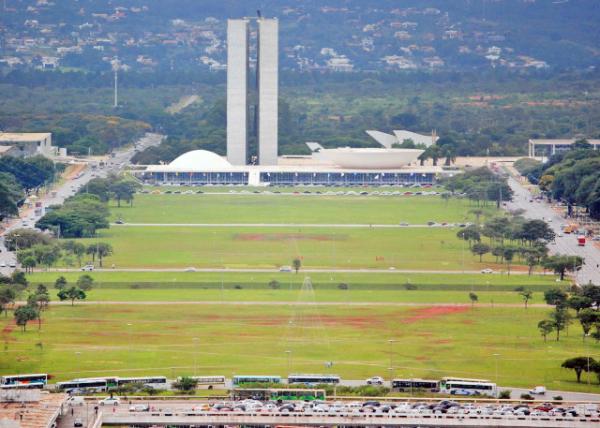 Panorama of National Congress, a Symbol of Brazilian Democracy & a Masterpiece of Modernist Architecture Panorama of National Congress, a Symbol of Brazilian Democracy & a Masterpiece of Modernist Architecture
(国会大厦全景·巴西民主的象征和现代主义建筑的杰作)
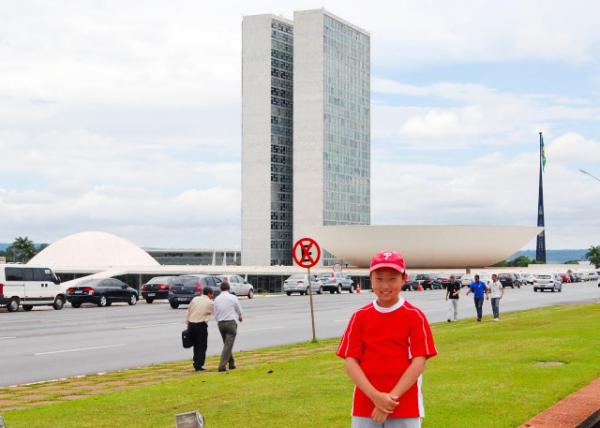 National Congress w/ the Small Cupola Down (Senate House) & the Large Inverted Cone Up (Chamber of Deputies) National Congress w/ the Small Cupola Down (Senate House) & the Large Inverted Cone Up (Chamber of Deputies)
(国会大厦·参议院小圆拱朝上与众议院大圆拱朝上 01-09-2013) 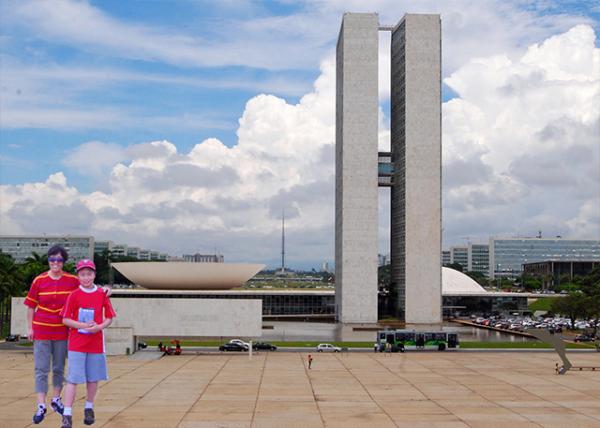 National Congress, the Legislative Body of Brazil's Federal Government National Congress, the Legislative Body of Brazil's Federal Government
(国会·巴西联邦政府立法机构 01-09-2013)
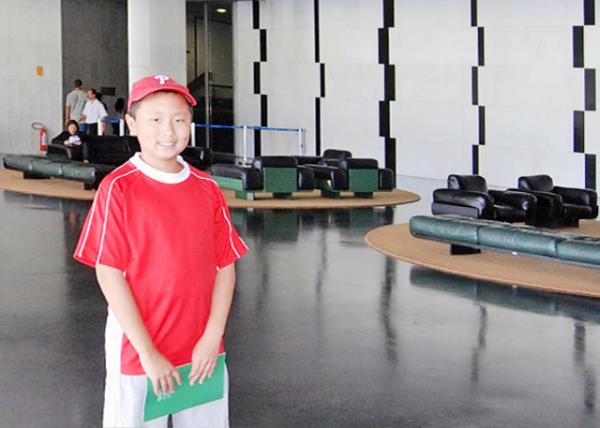 Black Hall of the National Congress, the Main Entrance to the National Congress & a Common Area for Both the Federal Senate & the Chamber of Deputies Black Hall of the National Congress, the Main Entrance to the National Congress & a Common Area for Both the Federal Senate & the Chamber of Deputies
(国会大厦黑色大厅·国会正门,联邦参议院和众议院的共同区域 01-09-2013) 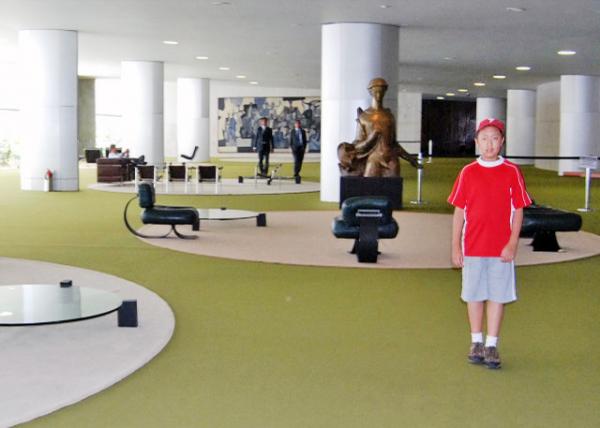 Green Hall of the National Congress, a Hub for Journalists Interviewing Congressmen & Other Political Figures Green Hall of the National Congress, a Hub for Journalists Interviewing Congressmen & Other Political Figures
(国会大厦绿色大厅·记者采访国会议员和其他政治人物的中心 01-09-2013)
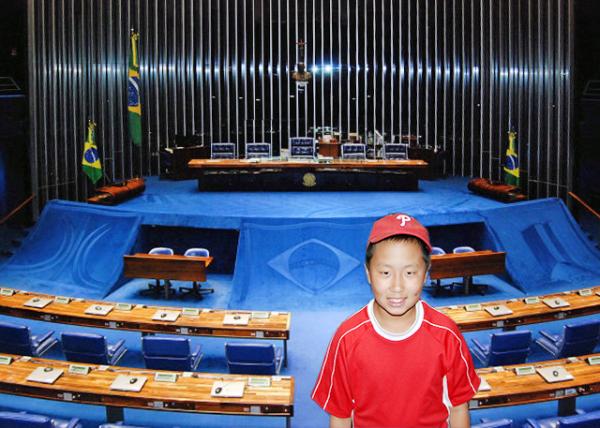 Senate, the Upper House of the National Congress Senate, the Upper House of the National Congress
(参议院·国会上议院 01-09-2013) 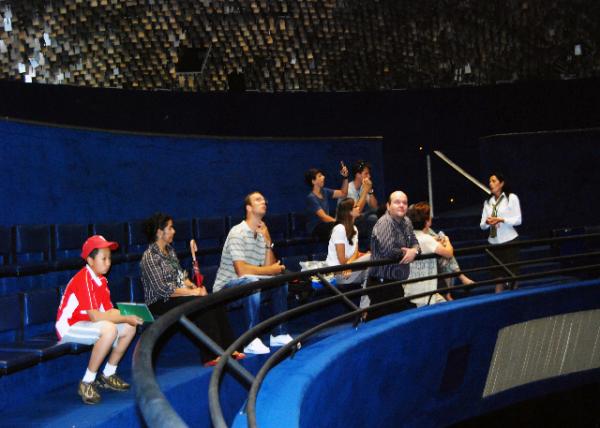 Tour Guide in Portuguese @ Upper House of the National Congress Tour Guide in Portuguese @ Upper House of the National Congress
(国会上议院·葡萄牙语导游 01-09-2013) 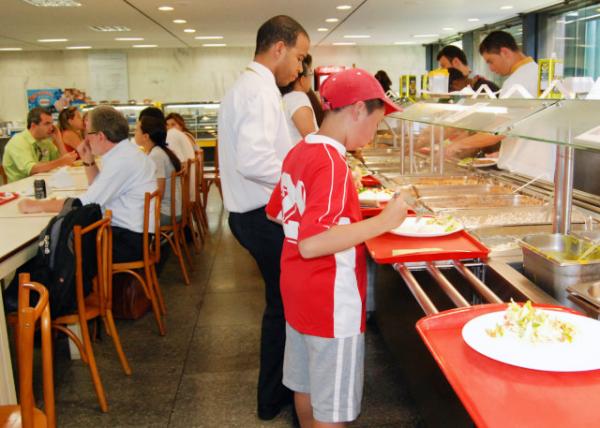 Natl Congress Cafeteria (国会食堂 01-09-2013) Natl Congress Cafeteria (国会食堂 01-09-2013)
 Lunch @ Natl Congress Cafeteria Lunch @ Natl Congress Cafeteria
(国会食堂·午餐 01-09-2013)
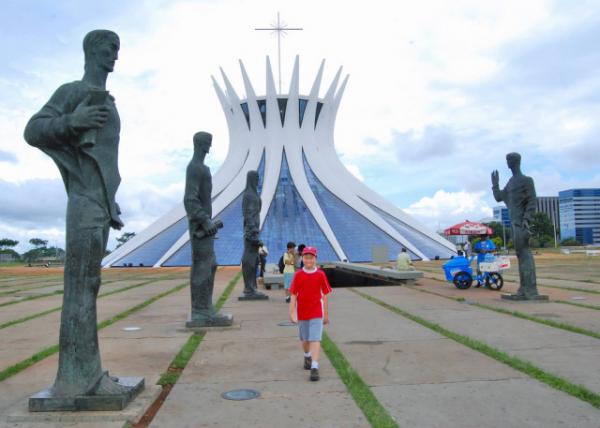 Four Evangelists @ Cathedral of Brasília Four Evangelists @ Cathedral of Brasília
(巴西大教堂·四位福音传教士 01-09-2013)
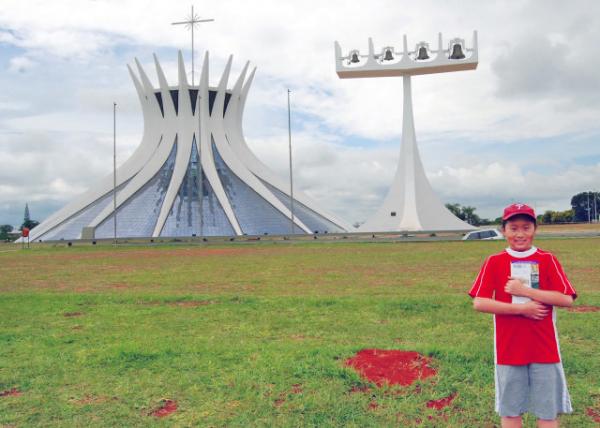 Cathedral of Brasília & Bell Tower,w/ the Hyperboloid Shape Formed by 16 Curved Concrete Columns towards the Sky Cathedral of Brasília & Bell Tower,w/ the Hyperboloid Shape Formed by 16 Curved Concrete Columns towards the Sky
(带钟塔的巴西大教堂·双曲面形状,由16根弯曲的混凝土柱伸向天空 01-09-2013) 
Don Bosco Sanctuary w/ Three Angel Sculptures @ Cathedral of Brasília (巴西大教堂——博斯科“森林”神父圣殿与三位天使雕像 01-09-2013)
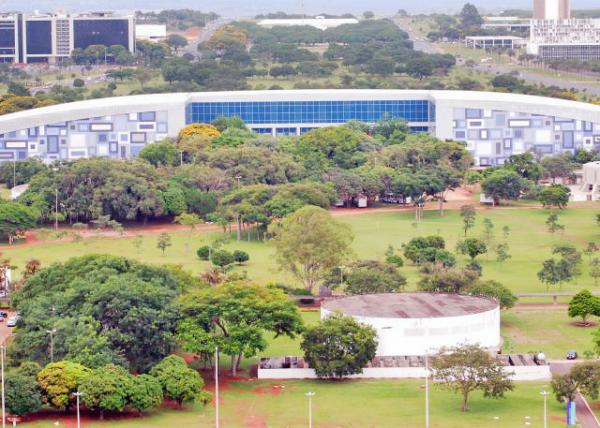 Convention Center Ulysses Guimarães Convention Center Ulysses Guimarães
(巴西政治家和律师尤利西斯·吉马良斯“愤怒·葡萄牙诞生地”会议中心) 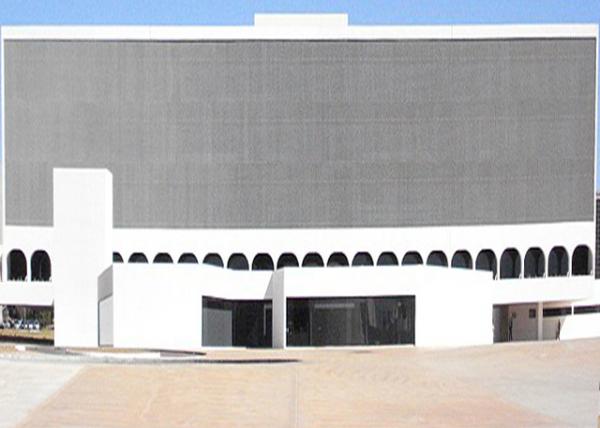 Biblioteca Nacional de Brasília Featuring Clean Lines, Expansive Glass Façades for Natual Light Biblioteca Nacional de Brasília Featuring Clean Lines, Expansive Glass Façades for Natual Light
(巴西利亚国家图书馆·线条简洁,拥有宽阔的玻璃幕墙,自然采光充足) 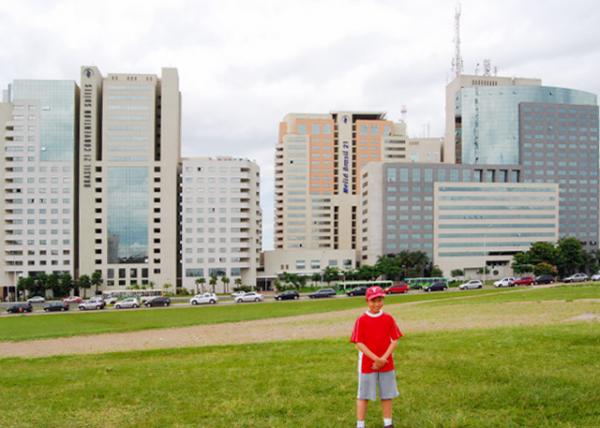 Stay @ Melia Brasil 21 on Hotel Sector in Central Braslia Stay @ Melia Brasil 21 on Hotel Sector in Central Braslia
(下榻·市中心酒店区的美利亚“梣树”巴西21商务中心酒店 01-09-2013) 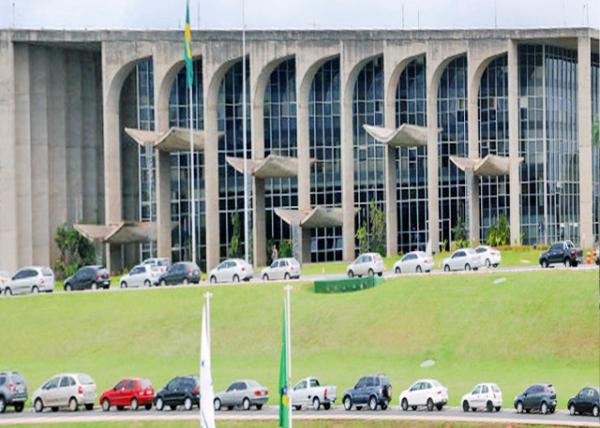 Ministry of Justice, 6 Balconies Decorated w/ Running Water Ministry of Justice, 6 Balconies Decorated w/ Running Water
(司法部·六个流水平台) 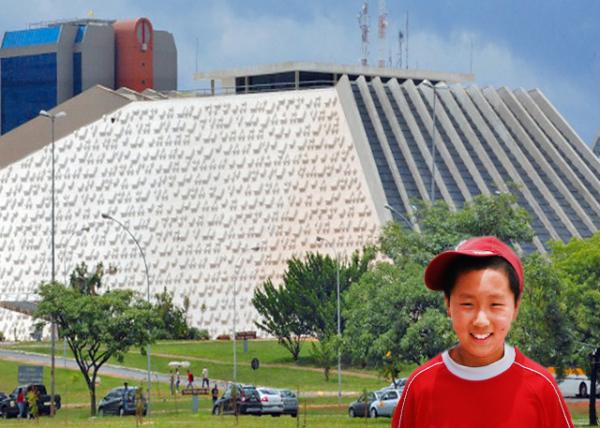 National Theater, a Truncated Aztec Pyramid National Theater, a Truncated Aztec Pyramid
(国家剧院·削掉顶部的阿兹特克金字塔 01-09-2013) 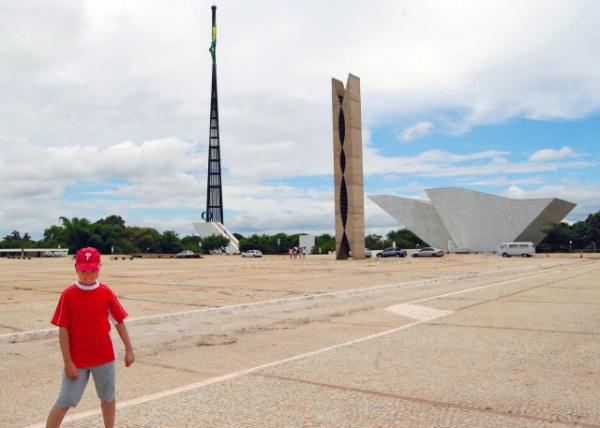 Mast & Natl Pavilion, Pigeon's House, & Natl Memorial Mast & Natl Pavilion, Pigeon's House, & Natl Memorial
(国旗桅杆和国家馆 | 鸽舍 | 国家纪念馆 01-09-2013)  Pantheon of the Fatherland & Freedom Tancredo Neves Pantheon of the Fatherland & Freedom Tancredo Neves
(巴西总理坦克雷多·内维斯“力量·雪”祖国与自由万神殿) 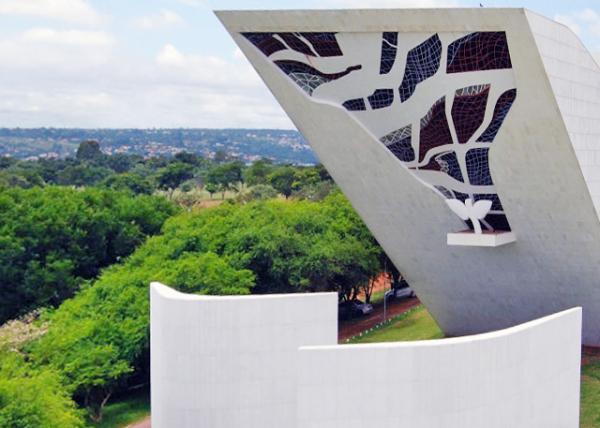 Pantheon of the Fatherland in Honor of National Heroes Embodied Ideals of Freedom & Democracy Pantheon of the Fatherland in Honor of National Heroes Embodied Ideals of Freedom & Democracy
(祖国万神殿·旨在纪念那些体现自由民主理想的民族英雄)
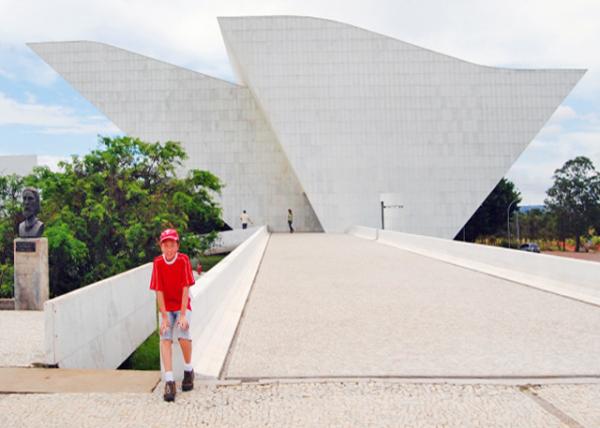 Pantheon of the Fatherland Symbolizing a Dove, Memorial to Tancredo Neves Pantheon of the Fatherland Symbolizing a Dove, Memorial to Tancredo Neves
(象征鸽子的祖国万神殿——坦克雷多·内维斯纪念碑 01-09-2013)
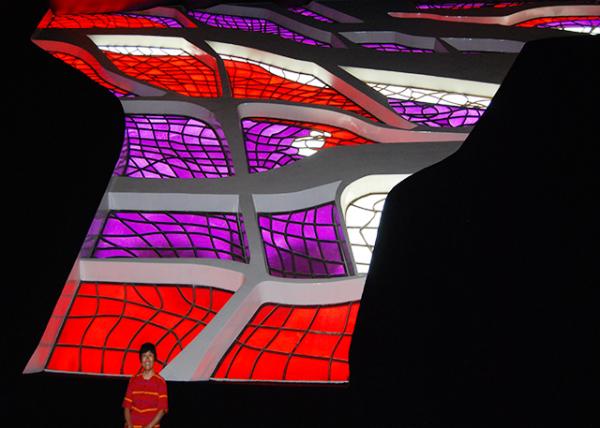 Mural of Freedom in Pantheon of the Fatherland Mural of Freedom in Pantheon of the Fatherland
(祖国万神殿·《自由》壁画 01-09-2013) 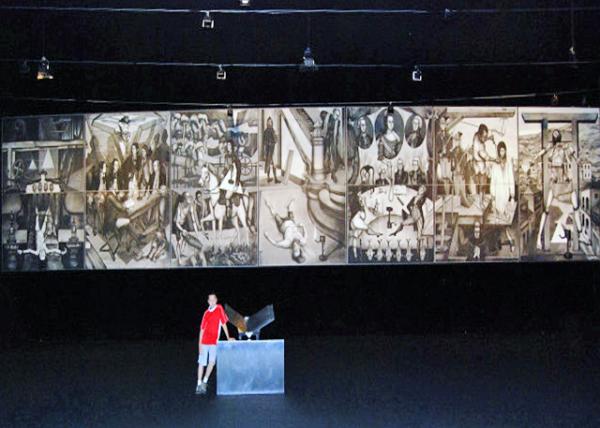 Painel da inconfidência @ Pantheon of the Fatherland Painel da inconfidência @ Pantheon of the Fatherland
(祖国万神殿·雕塑《不信任之心》01-09-2013) 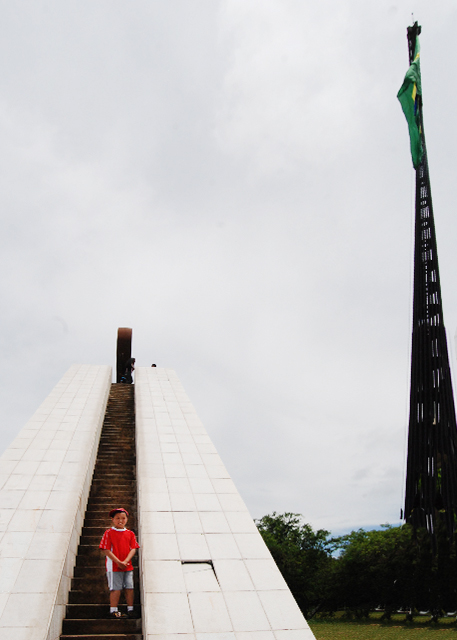
Eternal Flame Burnt on Top of a Tower Built on the Diagonal, Representing the Freedom of the People & the Country's Independence (祖国万神殿斜建的塔顶上燃烧着永恒之火·象征着人民的自由和国家的独立 01-09-2013)
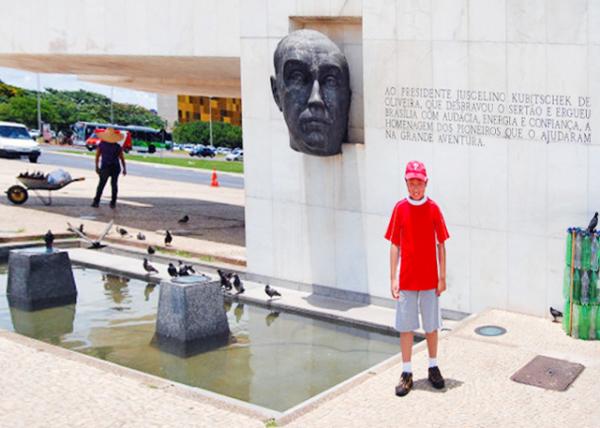 JK Memorial, a Tribute to Juscelino Kubitschek, the 21st President of Brazil & the Visionary behind the Construction of Brasília JK Memorial, a Tribute to Juscelino Kubitschek, the 21st President of Brazil & the Visionary behind the Construction of Brasília
(前总统儒塞利诺·库比契克纪念馆——向巴西第21任总统、巴西利亚建设的先行者儒塞利诺·库比切克致敬 01-09-2013)
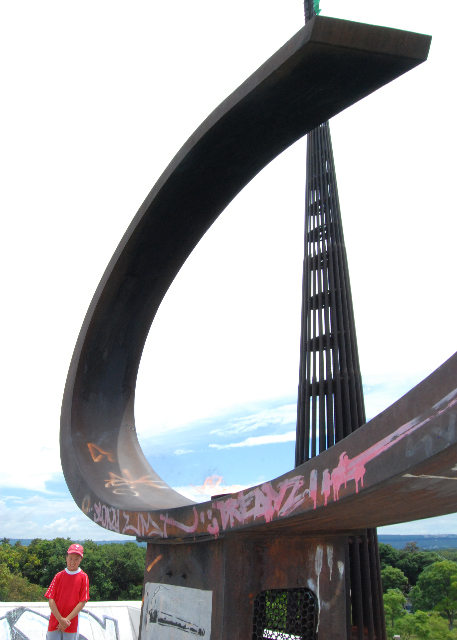
JK Memorial w/ the Pedestal Possibly Inspired by the Symbol of Communism (前总统儒塞利诺·库比契克纪念馆——基座的设计灵感可能基于共产主义象征 01-09-2013)
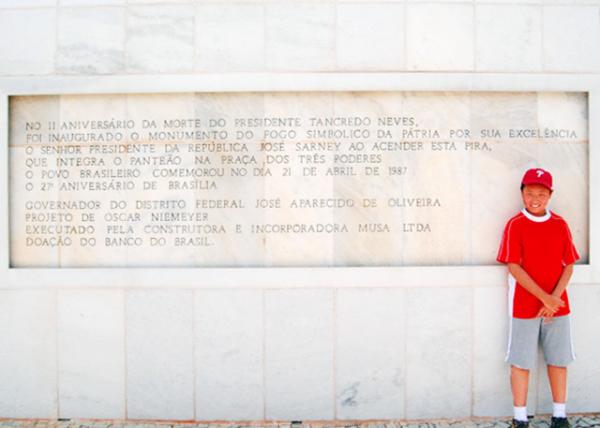 Museu Histórico de Brasília, the Oldest Museum in the Federal Capital Museu Histórico de Brasília, the Oldest Museum in the Federal Capital
(城市历史博物馆·联邦首都最古老的博物馆 01-09-2013) 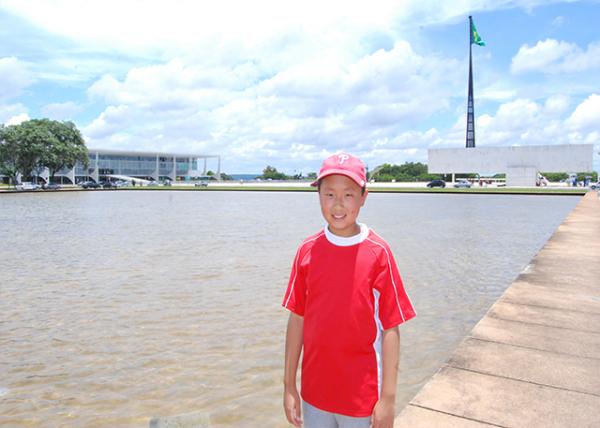 Plaza of the Three Powers, the Symbolic Heart of the City & Brazil's Political Power Plaza of the Three Powers, the Symbolic Heart of the City & Brazil's Political Power
(三权广场·城市中心和巴西政治权力的象征 01-09-2013) 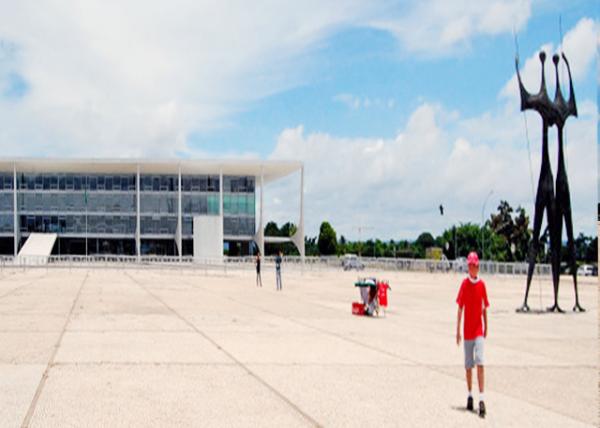 Statue of the Candangos & Planalto Palace @ Plaza of the Three Powers Statue of the Candangos & Planalto Palace @ Plaza of the Three Powers
(三权广场·雕像《坎丹哥斯“移民工人”》与总统府 01-09-2013) 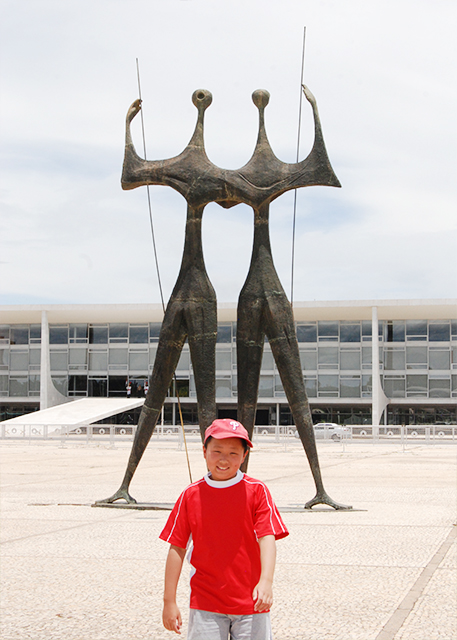
Monument to Candango (新首都巴西利亚建造者纪念碑《坎丹哥斯》01-09-2013) 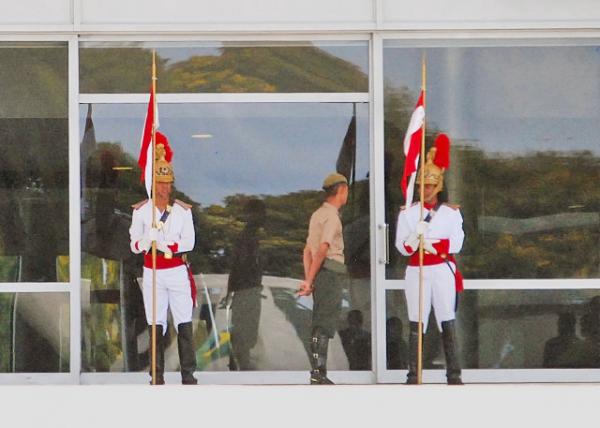 Planalto Palace, the President Official Workplace Planalto Palace, the President Official Workplace
(普拉纳尔托“高原”宫·总统工作场所)
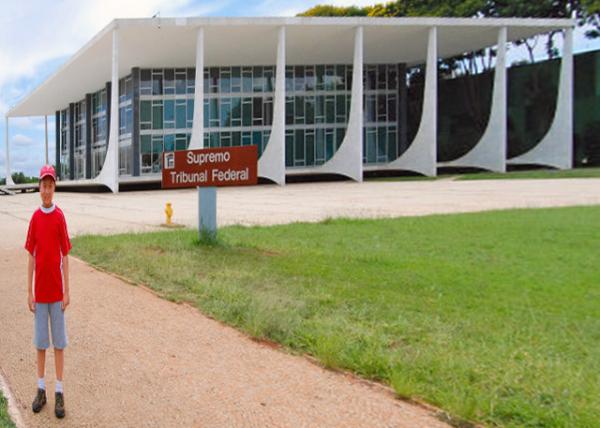 Supreme Federal Tribunal for Judicial Review Supreme Federal Tribunal for Judicial Review
(最高联邦法院·司法审查 01-09-2013) 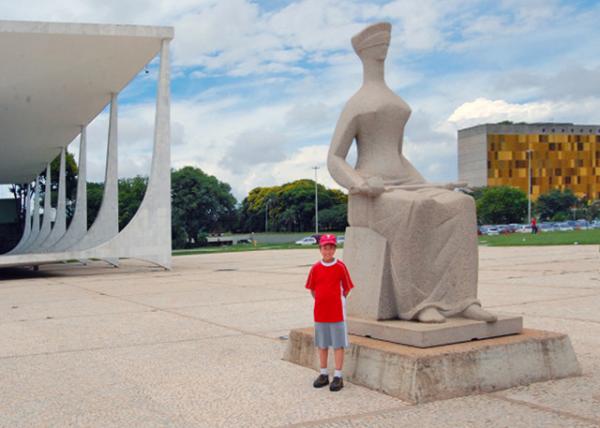 Statue of Justice @ Supreme Federal Tribunal Statue of Justice @ Supreme Federal Tribunal
(最高联邦法院·雕像《正义》01-09-2013) 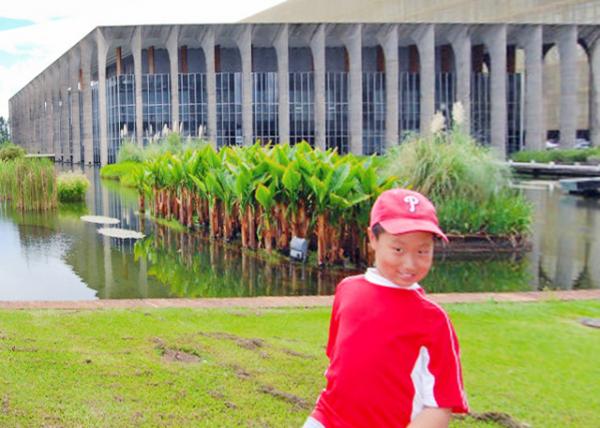 Itamaraty Palace, the Ministry of External Relations, the Palace of the Arches for Its Distinctive Series of Concrete Arches Itamaraty Palace, the Ministry of External Relations, the Palace of the Arches for Its Distinctive Series of Concrete Arches
(伊塔马拉蒂“小石头河”宫·外交部,拥有其一系列独特的混凝土拱门而被称为“拱门宫殿” 01-09-2013) 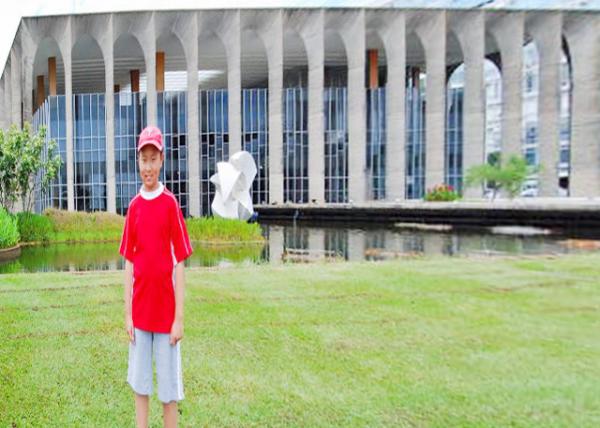 Meteor, a Marble Sculpture @ Itamaraty Palace Meteor, a Marble Sculpture @ Itamaraty Palace
(伊塔马拉蒂宫·大理石雕塑《陨石》01-09-2013) 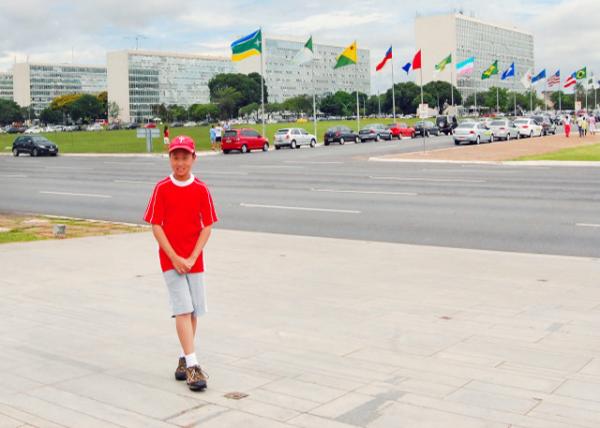 Esplanade of Ministries Housing All the Minister Esplanade of Ministries Housing All the Minister
(部委大道·各部长办公室所在地 01-09-2013)
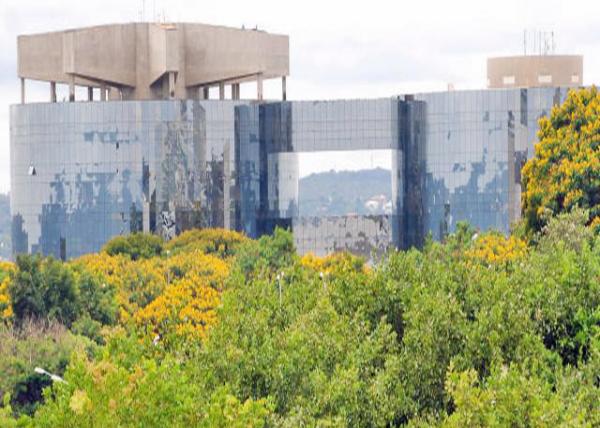 Office of the Attorney-General, Non-White Bldg Office of the Attorney-General, Non-White Bldg
(联邦总检察长·唯一一座非白色建筑) 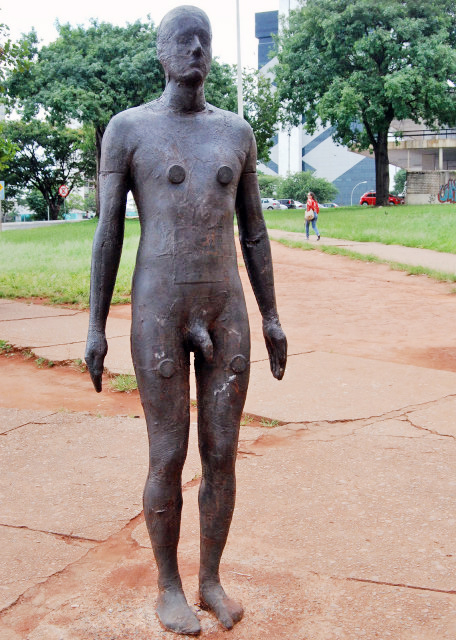
Antony Gormley Freedom (安东尼·葛姆雷“无价·高贵”雕塑《自由》)
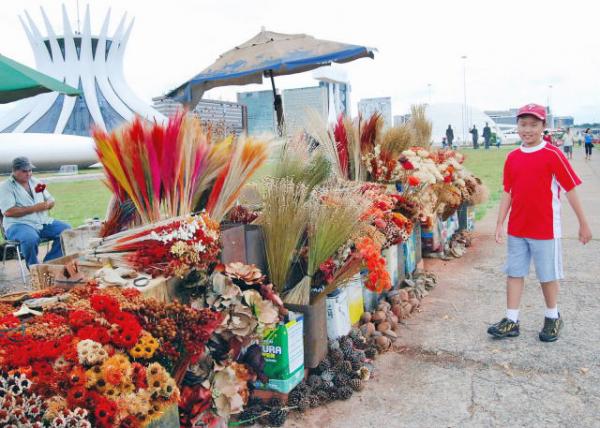 Dried Flower Market (干花集市 01-09-2013) Dried Flower Market (干花集市 01-09-2013)
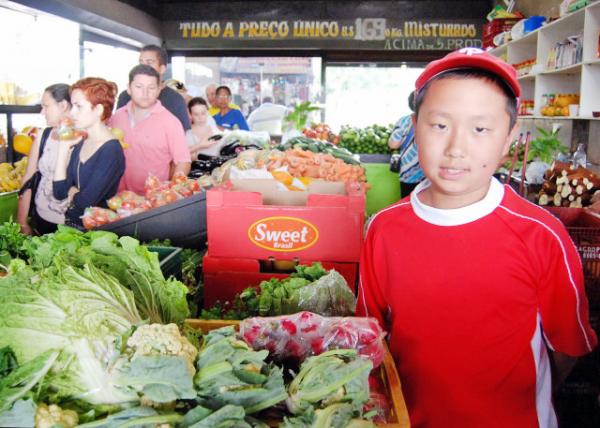 Grocery Store (果蔬店 01-09-2013) Grocery Store (果蔬店 01-09-2013)
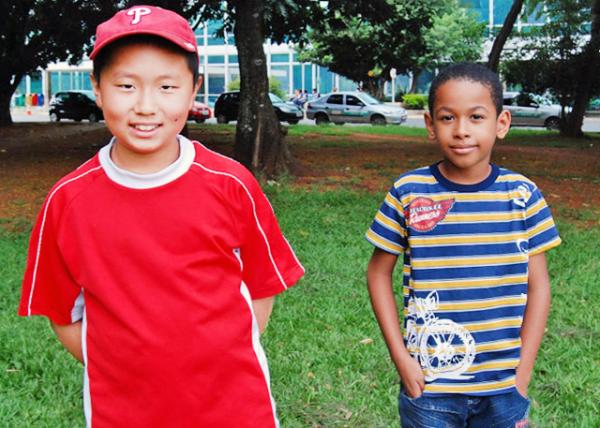 Meet 9-Yr-Old & 4th-Grader Local Pal Meet 9-Yr-Old & 4th-Grader Local Pal
(偶遇当地九岁、四年级的小伙伴 01-09-2013) 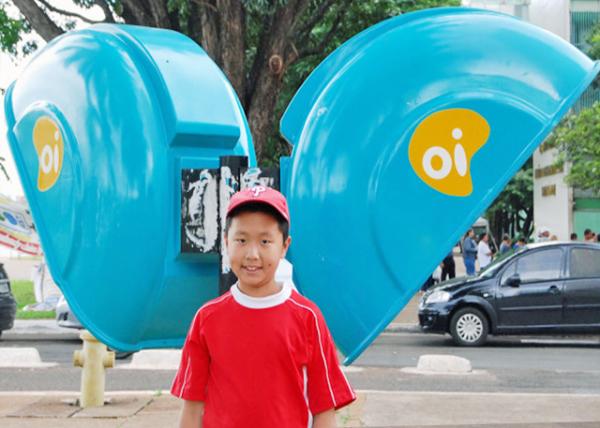 Popular Telephone Booth (流行的电话亭 01-09-2013) Popular Telephone Booth (流行的电话亭 01-09-2013)
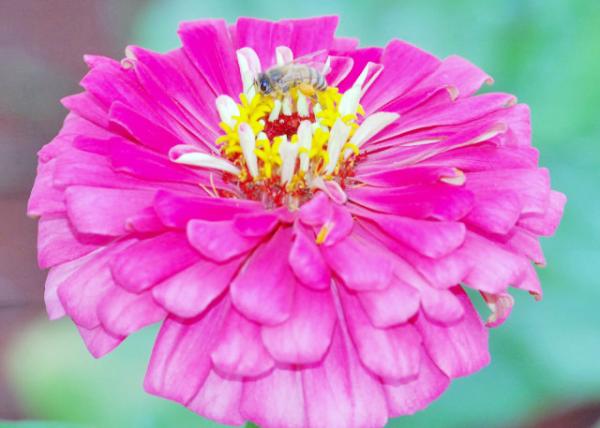 Gerbera Daisy (非洲菊) Gerbera Daisy (非洲菊)
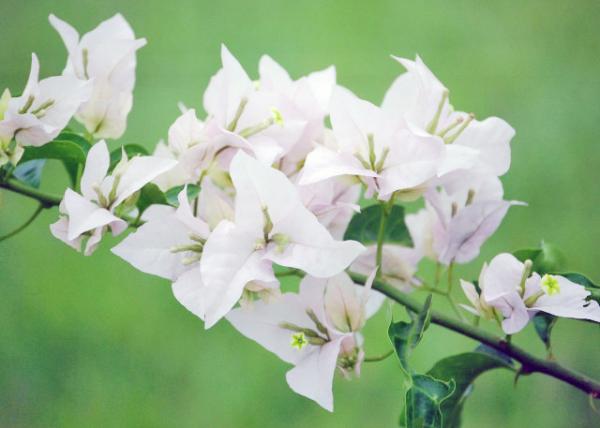 Bougainvillea (九重葛) Bougainvillea (九重葛)
 Flame Tree (凤凰木) Flame Tree (凤凰木)
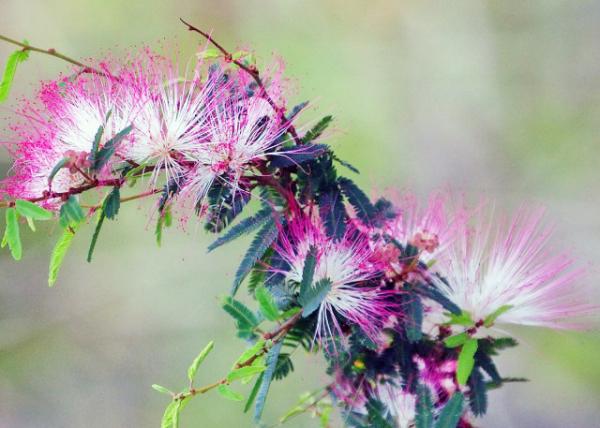 Pink Power Puff Calliandra (合欢) Pink Power Puff Calliandra (合欢)
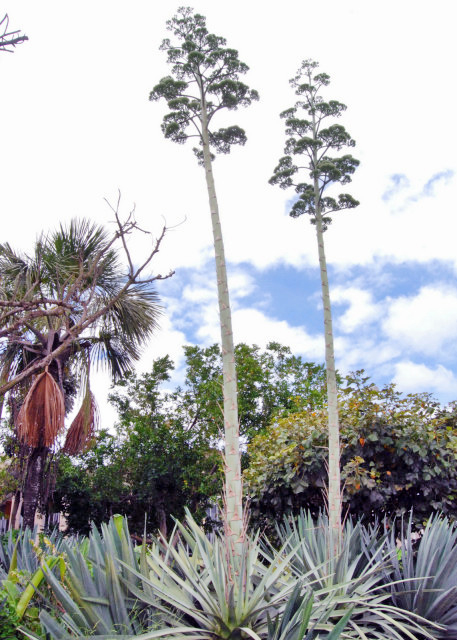
Blue Agave (蓝色龙舌兰) 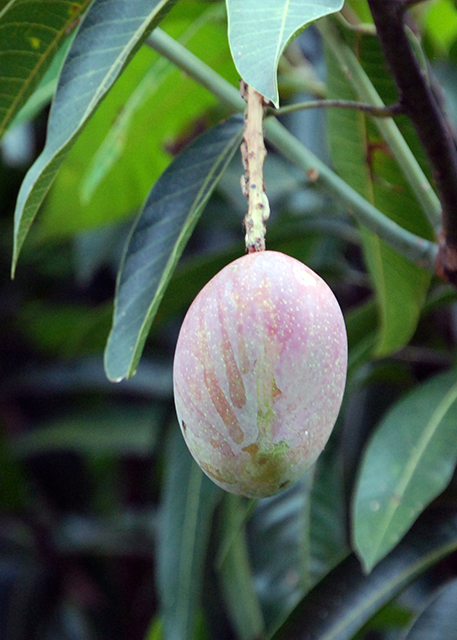
Haden Mango (哈登“干草谷”杧果)  Tommy Atkins Mango over Passion Fruit Tommy Atkins Mango over Passion Fruit
(保质期长的汤米·阿特金斯“双·红土后裔”芒果与西番莲) 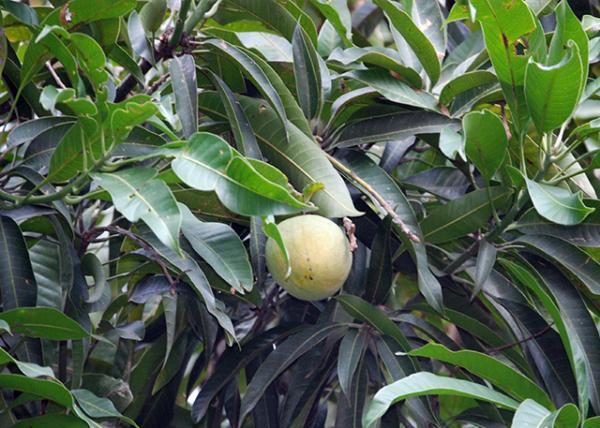 Honey Mango (蜂蜜芒果) Honey Mango (蜂蜜芒果)

Avocado (鳄梨) 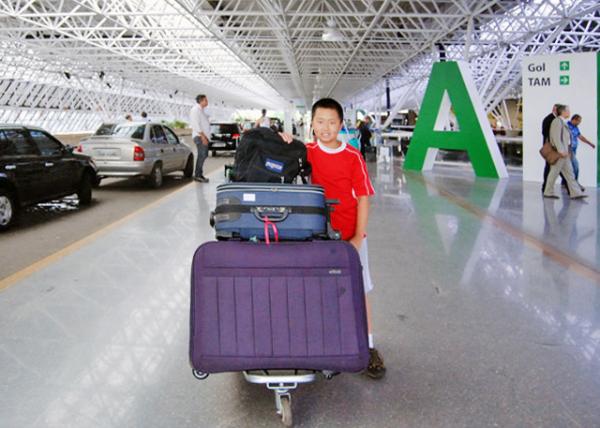 Departure @ BSB Intl Airport Departure @ BSB Intl Airport
(巴西利亚总统儒塞利诺·库比契克机场——离别 01-09-2013) Crosslink(相关博文):
Brazil(出游巴西)
South America(漂流南美洲) 小学四年级(4th Grade) |
